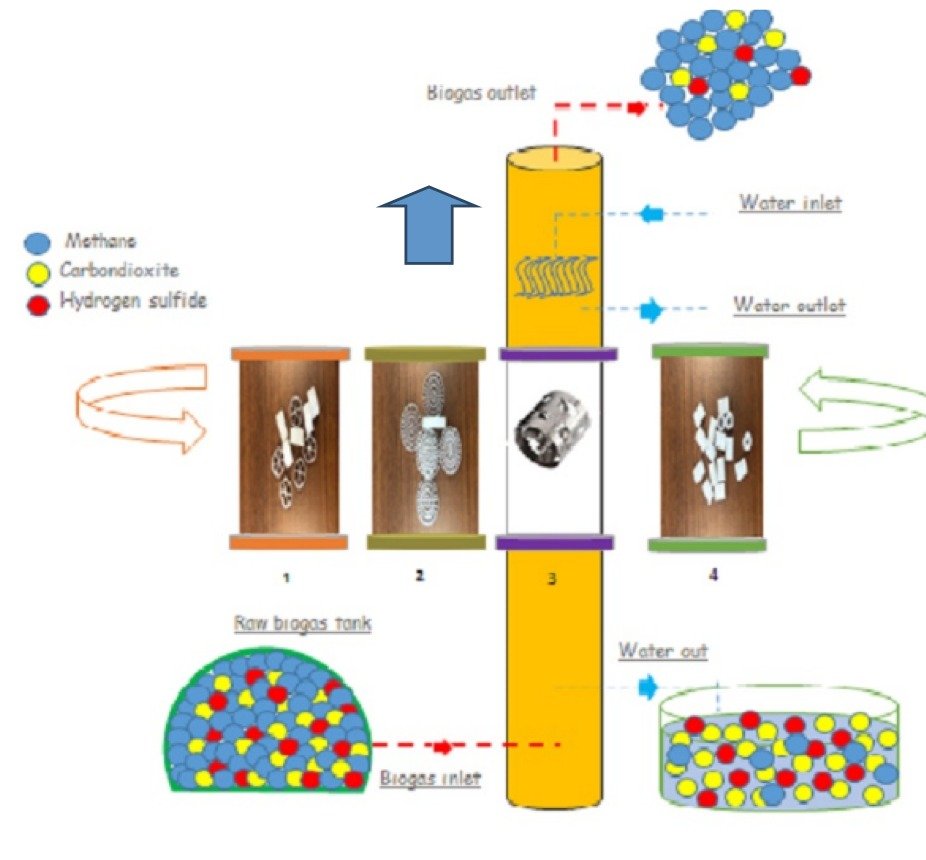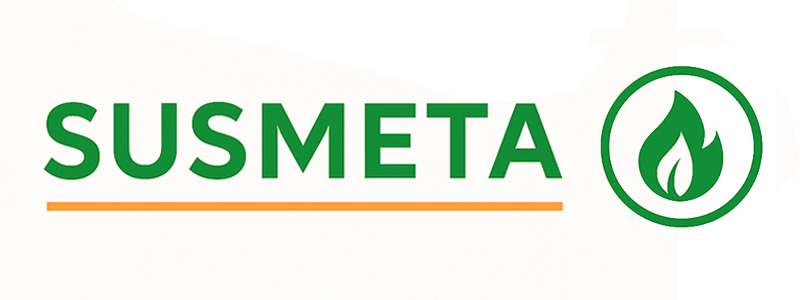TECHNOLOGY
Experimental Study for High-Efficiency and Eco-Friendly Biomethane Production

Description
Biogas is a clean and renewable energy source due to its high methane content. However, direct use is not feasible because of the presence of corrosive and toxic components such as methane (50–70%), carbon dioxide (30–50%), and hydrogen sulfide (300–2000 ppm). Therefore, biogas must be purified and upgraded to reach natural gas quality.
Common upgrading technologies include cryogenic separation, membrane purification, pressurized water scrubbing, chemical (amine) scrubbing, and pressure swing adsorption. Among these, water scrubbing stands out for its simplicity and low operational cost. In this method, unwanted gases such as CO₂ and H₂S are dissolved in water and removed from the gas phase. The resulting gas, with over 90% methane content, is called biomethane.
Our innovative system aims to pioneer a biogas upgrading process not yet used in Turkey but widely adopted in Europe. In our process, CO₂ is absorbed using water, while H₂S is biologically oxidized into elemental sulfur. This allows us to not only produce high-purity biomethane but also generate value-added by-products such as purified CO₂ and elemental sulfur.
The process utilizes biomedia with enhanced surface area, which both expands the gas-liquid contact surface for CO₂ absorption and provides a habitat for sulfur-oxidizing bacteria to efficiently remove H₂S.
This method will first be validated with laboratory-scale experiments. Once successful, it will be scaled up to a pilot plant to evaluate its real-world performance.
